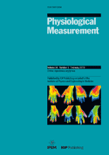
PHYSIOLOGICAL MEASUREMENT
Scope & Guideline
Unveiling the Complexity of Physiological Measurements
Introduction
Aims and Scopes
- Innovative Measurement Techniques:
The journal emphasizes the development of novel measurement techniques, particularly in non-invasive and wearable technologies, to monitor physiological parameters in various settings. - Interdisciplinary Applications:
Research published in the journal often integrates principles from engineering, computer science, and medicine to address complex physiological challenges, highlighting its interdisciplinary nature. - Clinical Relevance and Patient Monitoring:
A significant focus is placed on studies that aim to improve clinical monitoring and diagnostics, particularly for conditions like cardiovascular diseases, respiratory issues, and sleep disorders. - Machine Learning and Data Analysis:
The journal frequently features papers that utilize machine learning and advanced data analysis techniques to enhance the interpretation of physiological signals and improve diagnostic accuracy. - Systematic Reviews and Meta-Analyses:
The journal also publishes comprehensive reviews that synthesize existing literature on physiological measurement techniques, providing valuable insights for researchers and clinicians.
Trending and Emerging
- Wearable Technology and Remote Monitoring:
There is a significant increase in studies focusing on wearable devices and remote monitoring systems, reflecting a growing interest in continuous health tracking and telemedicine. - Artificial Intelligence and Machine Learning Applications:
The use of AI and machine learning to analyze complex physiological data is rapidly emerging as a prominent theme, enabling more accurate diagnostics and personalized medicine. - Integration of Multimodal Data:
Research that combines various physiological signals (e.g., ECG, PPG, and respiratory data) to provide comprehensive health assessments is on the rise, enhancing diagnostic capabilities. - Focus on Mental and Cognitive Health:
An emerging trend is the exploration of physiological measurements as they relate to mental and cognitive health, including studies on stress, sleep disorders, and neurological conditions. - Telehealth and Digital Health Interventions:
The pandemic has accelerated research into telehealth solutions, with a notable increase in studies evaluating the effectiveness of digital health interventions for patient care.
Declining or Waning
- Traditional Physiological Measurements:
There appears to be a waning interest in traditional methods of physiological measurement, such as basic electrocardiography or simple spirometry, as more advanced and non-invasive technologies gain traction. - Invasive Monitoring Techniques:
Research focusing on invasive monitoring techniques has decreased, possibly due to the increased emphasis on patient comfort and safety, leading to a preference for non-invasive alternatives. - Basic Signal Processing Methods:
The exploration of basic signal processing techniques without the incorporation of advanced machine learning methods is less prevalent, indicating a shift towards more sophisticated analytical approaches.
Similar Journals

Conservation Physiology
Fostering collaboration for global ecological sustainability.Conservation Physiology is a premier scholarly journal published by Oxford University Press, dedicated to advancing the understanding of physiological processes in the context of conservation and environmental science. Established in 2013 as an Open Access platform, it has rapidly gained recognition within the academic community, featuring research that spans various critical areas such as ecological modeling, management, monitoring, policy, and law. With its impressive impact in the field, Conservation Physiology holds a notable rank in Scopus and boasts quartile distinctions, reflecting its influence and contribution to Nature and Landscape Conservation. This journal serves as a vital resource for researchers, professionals, and students engaged in conservation efforts, providing them with a comprehensive understanding of how physiological insights inform effective conservation strategies and policies. Through its commitment to open access, Conservation Physiology ensures that vital research is readily available, fostering collaboration and innovation in the pursuit of global ecological sustainability.

Comprehensive Physiology
Advancing the Frontiers of Physiological ScienceComprehensive Physiology is a premier journal published by WILEY, dedicated to the profound exploration of physiological science. With an impact factor that underscores its significance within the field, this journal serves as a pivotal resource for researchers, professionals, and students alike, ensuring access to cutting-edge studies and reviews that span various domains of physiology. It stands proudly in the Q1 category across multiple subfields including Medicine (miscellaneous), Physiology, and Medical Physiology, reflecting its outstanding position within the scientific community. Evaluated within prestigious bibliometric ranks, it boasts an impressive Scopus ranking, placing it in the 12th percentile for medical physiology and 23rd percentile in biochemical, genetic, and molecular physiology. As it converges from 2011 to 2024, Comprehensive Physiology continues to foster a platform for innovative discoveries and collaborative exchanges, thereby contributing significantly to the advancement of medical knowledge and understanding of physiological processes.
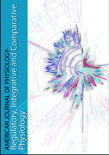
American Journal of Physiology-Regulatory, Integrative and Comparative Physiology
Pioneering Comparative Studies in Physiological ResearchThe American Journal of Physiology-Regulatory, Integrative and Comparative Physiology, published by the American Physiological Society, serves as a premier platform for disseminating cutting-edge research in the fields of physiology, emphasizing regulatory, integrative, and comparative studies that advance our understanding of bodily functions. With an ISSN of 0363-6119 and E-ISSN of 1522-1490, this esteemed journal is recognized for its substantial impact, maintaining a 2023 Q2 ranking in both the physiology and medical physiology categories as well as commendable positions in Scopus rankings. The journal has been pivotal since its inception in 1977 and continues to foster interdisciplinary dialogue among researchers, professionals, and students alike, contributing significantly to the evolving landscape of physiological sciences. Although it operates under a traditional subscription model, its commitment to high-quality, peer-reviewed content ensures that it remains an essential resource for anyone engaged in physiological research and education.

Function
Pioneering discoveries that drive the evolution of healthcare.Function is a pioneering open access academic journal published by Oxford University Press, dedicated to advancing research in the fields of Cancer Research, Cell Biology, Molecular Medicine, and Physiology. Since its inception in 2020, this journal has quickly established itself as a vital resource for researchers and professionals alike, achieving a commendable impact factor in the 2023 rankings, where it stands in the Q2 quartile across multiple categories. Located in the heart of the United Kingdom, Function aims to foster a global exchange of knowledge by providing free and unrestricted access to cutting-edge research, facilitating collaboration and innovation within the scientific community. With a robust focus on emerging discoveries and interdisciplinary approaches, this journal encourages contributions that unravel the complexities of biological functions, paving the way for transformative advancements in healthcare and related sciences. As it converges from 2020 to 2024, Function continues to be an invaluable platform for disseminating research that has the potential to shape the future of medicine and biology.
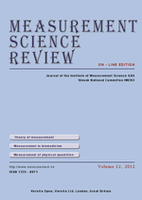
Measurement Science Review
Advancing the Frontiers of Measurement ScienceMeasurement Science Review is a distinguished open-access journal published by SCIENDO, dedicated to advancing the field of measurement science across various disciplines, including Biomedical Engineering, Control and Systems Engineering, and Instrumentation. Since its inception in 2008, it has actively contributed to the dissemination of innovative research and practices relevant to these fields, currently holding a notable Q3 ranking in its category as per the 2023 metrics. With an emphasis on robust scientific inquiry and practical applications, Measurement Science Review is positioned as an essential resource for researchers, professionals, and students seeking to enhance their understanding and expertise in measurement technologies. The journal provides an accessible platform for interdisciplinary dialogue and collaboration, making it a vital component of the academic landscape in Slovakia and beyond. Its publication track extends to 2024, ensuring timely access to cutting-edge research findings for a global audience.
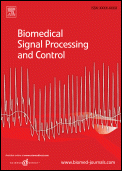
Biomedical Signal Processing and Control
Innovating the future of biomedical engineering through research.Biomedical Signal Processing and Control is a premier academic journal published by ELSEVIER SCI LTD that stands at the forefront of the rapidly evolving fields of biomedical engineering, health informatics, and signal processing. With an impressive impact factor reflecting its scholarly influence and high standards of research, this journal has been recognized in the Q1 quartile category across multiple disciplines as of 2023. Specifically, it holds esteemed positions within Biomedical Engineering, Health Informatics, and Signal Processing, where it ranks in the top tier of its field on Scopus: #19/131, #21/138, and #47/303 respectively. Published continually from 2006 to 2024, the journal serves as a critical platform for researchers, healthcare professionals, and students, fostering innovation in signal processing techniques and their applications in biomedical systems. Access to cutting-edge research and methodologies makes it an indispensable resource for advancing knowledge and practice within these interdisciplinary domains.
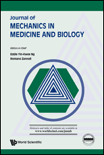
Journal of Mechanics in Medicine and Biology
Innovating at the Crossroads of Engineering and BiologyThe Journal of Mechanics in Medicine and Biology, published by World Scientific Publishing Co Pte Ltd, serves as a critical platform for interdisciplinary research at the intersection of engineering and biomedical sciences. With an ISSN of 0219-5194 and E-ISSN of 1793-6810, this esteemed journal has been dedicated to exploring the mechanical principles that govern biological systems since its inception in 2008. Based in Singapore, it addresses a diverse range of topics, from biomaterials to biomechanics, contributing valuable insights into the field’s evolving landscape. Although currently positioned in Q4 of Biomedical Engineering according to the 2023 category quartiles, it is poised for growth and increased visibility within the scientific community, fostering innovation and collaboration among researchers, professionals, and students alike. The journal emphasizes the importance of cutting-edge research and its practical implications, making it a vital resource for those striving to enhance the future of medical technologies and biological understanding.

Frontiers in Physiology
Connecting global scholars through open-access discoveries.Frontiers in Physiology, published by FRONTIERS MEDIA SA, is a leading open-access journal that has been at the forefront of physiological research since its inception in 2010. As a reputable publication based in Switzerland, it aims to foster the dissemination of groundbreaking findings across various domains of physiology, engaging a global audience of scholars and practitioners. With a commendable Q2 ranking in the fields of both general physiology and medical physiology for 2023, this journal stands out in its field, achieving a significant Scopus rank of #32/113 in medical physiology and #58/193 in biochemistry, genetics, and molecular biology. Frontiers in Physiology not only commits to maintaining high scholarly standards but also ensures that all its articles are freely accessible, thereby promoting collaborative knowledge exchange. With a clear focus on advancing our understanding of physiological processes, the journal plays a crucial role in the development of innovative approaches to health and disease, making it an essential resource for researchers, professionals, and students alike.
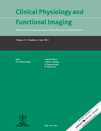
CLINICAL PHYSIOLOGY AND FUNCTIONAL IMAGING
Bridging the gap between physiology and advanced imaging.Clinical Physiology and Functional Imaging, published by Wiley, is a distinguished journal dedicated to advancing the fields of clinical physiology and biomedical imaging. This UK-based publication, with an ISSN of 1475-0961 and an E-ISSN of 1475-097X, has established itself as an important resource for researchers and professionals from various backgrounds, focusing on the physiological mechanisms underlying human health and disease through innovative imaging techniques. With a convergence year span from 2002 to 2024, the journal is classified within the Q3 quartile across several medical and physiology categories in 2023, reflecting its commitment to quality research amid a competitive landscape. Although it currently lacks an H-index, its rankings within Scopus—#70 in Medicine (Miscellaneous) and #134 in Biochemistry, Genetics and Molecular Biology—underscore its relevance in a rapidly evolving field. Engaging with this journal offers an opportunity to explore emerging research that bridges clinical practice and advanced imaging modalities, making it an essential read for students and established professionals alike.

MEASUREMENT TECHNIQUES
Unveiling Innovative Solutions in Engineering MeasurementMEASUREMENT TECHNIQUES, published by SPRINGER, is an esteemed journal within the realm of applied mathematics and instrumentation. With a history of publication dating back to 1958, this journal serves as a platform for innovative research and development in the measurement sciences. Though currently not an open-access journal, it provides a critical resource for researchers and professionals seeking to advance their knowledge in the fields of engineering and instrumentation techniques. The journal holds a vital position in its category, being ranked in the Q4 quartile for 2023 across multiple related fields, including engineering and applied mathematics. With an ISSN of 0543-1972 and e-ISSN of 1573-8906, MEASUREMENT TECHNIQUES strives to disseminate contemporary findings and foster collaboration among scholars, ensuring significant contributions to the evolving landscape of measurement technologies.